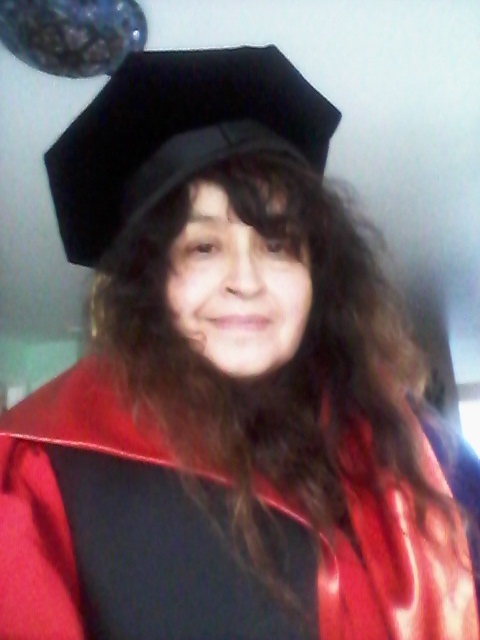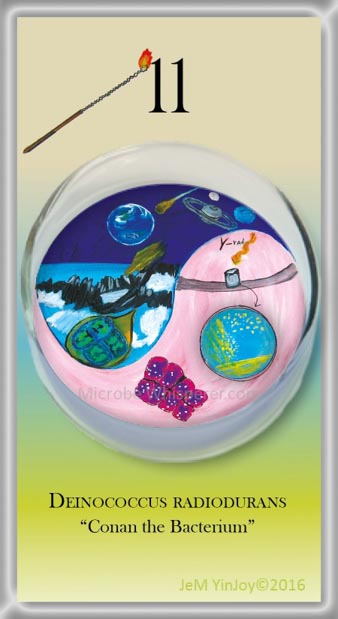
Who's Your Microbe?
This is a reading I offer to all aspiring microbe whisperers after they acquire their cards and guidebook.
The video posted today highlights a microbe from my Wands suit, called D. Radiodurans, one of the hardiest bacteria known. Because of this reputation, it has been dubbed “Conan the Bacterium.” Like the strong and muscular Barbarian from this movie reference, D. radiodurans has the power to endure extremes of heat and cold, strong acids ultraviolet light, desiccation, ionizing radiation and even, the vacuum of space!
What it does for the environment
D. radiodurans is used to bioremediate (clean up) soil that is contaminated with heavy metals and harmful solvents. It is sent on these “search and destroy” missions because it can infiltrate areas, microniches, that are not tolerable to other bacteria.
One example of this is that of using D. radiodurans to detoxify soils contaminated by heavy metal ion residues, the waste that is produced from nuclear weapons manufacture.
Spiritual significance
In spite of its popular title, “Conan the Bacterium,” D. radiodurans may be more comparable to an indestructible superhero from DC Comics legends than any mere warrior human. Like a powerful superhero, D. radiodurans can withstand assaults of radiation, acid, extreme heat and dryness that would sap the life blood, of the average bacterium. (of course you know by now that bacterial “blood” is really called cytoplasm).
While radiation is commonly used to kill pathogenic bacteria on surgical instruments and in cans of food, D. radiodurans simply shrugs it off as an ordinary bump or bruise and gets its incredibly powerful DNA repair machine to smooth it out in quick order. The unusual array of talents hoisted around D. radiodurans’ belt, has caused microbiologist to wonder if D. radiodurans originated from a far distant galaxy, brought to us by a meteorite.
That story already has the stamp of superhero legend on it, doesn’t it?
















Comments 2
What a fascinating read! I wonder how many D. Radiodurans it would take to clean up Japan’s post-tsunami radiation …. and after it’s all cleaned up, what does the bacteria eat next?
Author
Well, next it would eat up bars, cars and then it would only eat guitars! (strumming to Blondie’s “Rapture).
Ok. In reality, Deinococcus radiodurans is a heterotroph, meaning that it eats carbon-based (organic) food. Its ability to decontaminate soils, by breaking down mercury and toluene, is a metabolic side effect to its eating habits. And the fact that it is resistant to radiation makes it useful in performing these acts of bioremediation (on solvents and metal contaminants), because many radiation contaminated soils also have undesirable solvents and heavy metals.
In regard to Japan’s post Tsunami radiation, some of the radioactive elements released were iodine-131, cesium-137, and cesium-134. These are getting accumulated by the fish, and numerous other creatures up the food chain, in the ocean. Deinococcus radiodurans is not known to “eat” these radioactive elements. However the good news is, that the longest half life for these is 30 years (cesium-137), which means in 30 years, 1/2 of the radioactivity will have decayed. While this process of accumulation in fish can dilute the radioactivity, it is still harmful. Here’s an article for more information. https://e360.yale.edu/features/radioactivity_in_the_ocean_diluted_but_far_from_harmless